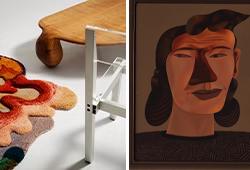Joseph Beuys
FILZKEIL
Cloth on wood. 25 x 9 x 5,5 cm.
Saleroom notice
Depicted in Tisdall Caroline, "Joseph Beuys", published by the Salomon R. Guggenheim Museum, 1979, page 180, 181.
Provenance
Mats B. Gåva av konstnären 14.10.1981.
Exhibitions
Unikt objekt använd av Joseph Beuys & Nam June Paik vid performance: In memoriam George Maciunas; Klavierduett, Staatlichen Kunstakademie, Düsseldorf, 7 juli 1978.
Literature
Avbildad i utställningskatalogen till Mats Bs "Fluxus - The development of an Antidote", Galleri Stenström 29 okt 1992- 17 jan 1993.
Avbildad i Tisdall Caroline, "Joseph Beuys", utgiven av the Salomon R. Guggenheim Museum, 1979, sid. 180, 181.
Watari-Um: I Love Art, Tokyo 1991, sid. 52.
More information
Reproducerad: Joseph Beuys & Nam June Paik: In memoriam George Maciunas, Edition Block GR-EB 113/14, Berlin 1978.
Designer
Joseph Beuys was a German draftsman, sculptor, and art theorist who worked both in Europe and the USA. He is considered one of Germany's most influential conceptual artists of the post-war era, associated notably with the Fluxus movement. Beuys studied at the Düsseldorf academy of Art between 1946 and 1951, where in 1961 he became a professor in sculpture. He has a strong interest for natural scenes, folklore and mythology, and strongly emphasises the healing potential of art for both the artist and the viewer, addressing social, psychological, and political themes. Beuys is particularly renowned for works incorporating materials like fat and felt—two common substances, one organic and one manufactured, which held deep personal significance for the artist. Examples include his sculpture "Fat Chair" and "Felt Corner" (1964) and the installation "Tallow" (1977). These pieces reflect Beuys' belief in art's transformative power and its ability to engage with complex human experiences.
Read more




























